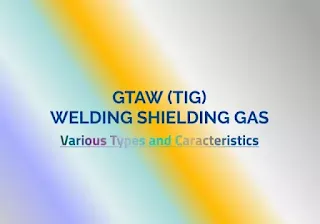TIG Welding Shielding Gas: Various Types and Characteristics
Tungsten Inert Gas (TIG) is a versatile welding method widely employed across various industrial sectors. This welding process involves the utilization of an electric arc with a shielding gas, where the selection of the shielding gas assumes a crucial role.
What is Shielding Gas?
Shielding gas refers to the type of gas used in the welding process to protect the metal being welded from the influence of the surrounding environment. In the context of Tungsten Inert Gas (TIG) welding, the significance of shielding gas cannot be overstated.
Its function is to act as a protective barrier, forming a shielding layer around the molten weld pool. The primary goal is to prevent oxidation of the weld pool that may occur due to exposure to the surrounding air.
Oxidation in the weld pool can lead to critical issues in the welding process. The occurrence of oxidation can result in suboptimal fusion between the filler material and the base metal, resulting in a vulnerable, brittle, and inconsistent weld joint.
Therefore, shielding gas plays a crucial role in maintaining the quality and strength of weld joints by providing a protected environment free from oxygen, which can cause oxidation. The selection of the appropriate type of shielding gas and proper setup is essential to ensure optimal welding outcomes.
READ: FCAW - choosing gas-shielded wires guide
Types of Shielding Gases
There are several types of shielding gases commonly used in the Tungsten Inert Gas (TIG) welding process. Argon stands out as the primary choice in TIG welding due to its ability to provide stable protection without inducing detrimental reactions.
Additionally, helium is frequently employed, especially when a higher level of heat is required for welding certain metals. A blend of argon and helium gases can be utilized to achieve an optimal balance between penetration and welding speed. Additional shielding gases such as nitrogen and hydrogen are sometimes added to modify welding characteristics.
The selection of the shielding gas is highly dependent on the type of material being welded, the thickness of the metal, and the specific welding requirements. The following provides an explanation of some commonly used shielding gases in Tungsten Inert Gas welding:
1. Argon Gas
Argon gas, extracted through the distillation process from the air, stands as the most commonly utilized shielding gas in TIG welding. Its advantages encompass a variety of factors.
- Universality: Argon can be used for welding all types of metals.
- Cost-effective: Argon is relatively affordable in the market.
- Low ionization and heat conductivity: It provides low ionization and heat conductivity properties.
- Arc stability: Argon maintains the welding arc stability for an extended duration.
Specifications of Argon Gas:
- Chemical Symbol: Ar
- Boiling Point: -185.9°C
- Relative Density (air = 1): 1.4
- Molecular Weight: 40
- Critical Temperature: -122.4°C
- Gas Density (@101.3 kPa; 15°C): 1.78 kg/m³
- Liquid Density (Boiling Point): 1393 kg/m³
- Specific Volume (@101.3 kPa; 15°C): 0.591 m³/kg
- Flash Point: Non-flammable
Argon generates a concentrated arc energy that results in a narrow weld bead and a high welding purity of 99.9%. It can be used for welding various metals, including mild steels, stainless steels, aluminum, and magnesium alloys.
Argon can be mixed with other gases within the range of 1-5%. Gas mixtures enhance arc concentration and welding speed, often used for finishing welds. However, caution must be exercised when adding hydrogen, as excessive amounts can lead to porosity in the weld joint.
2. Helium Gas
Helium is an ideal shielding gas due to its high ionization potential and excellent heat conductivity. It provides deeper penetration compared to argon. Helium's higher arc voltage (compared to argon) leads to higher heat input for the weld joint, making it suitable for thick metals and high welding rates. However, helium demands skilled welders for maintaining a constant arc length.
3. Argon-Helium Mixtures
A blend of 75% helium and 25% argon is used for welding dissimilar metals. This mixture's higher helium content enhances gas heating and is suitable for aluminum and copper welding. The increased heat input leads to faster material melting, resulting in wider and deeper penetration.
4. Argon-Helium-Hydrogen Mixtures
This shielding gas mixture is effective for welding low-carbon and alloy steels, stainless steel, and nickel-copper alloys. It provides a strong and efficient heat arc and penetration.
You might also like: Welding energy - powering the fusion of precision and efficiency
Gas Cylinder Color Codes
- Argon Gas Cylinder: Dark Blue (Peacock Blue)
- Helium Gas Cylinder: Light Brown (Middle Brown)
- Argon-Helium Gas Cylinder: Dark Blue Body with Light Brown Back
- Argon-Helium-Hydrogen Gas Cylinder: Dark Blue Body, Light Brown Back, and Deep Red Top/Cap
Conclusion

